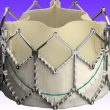Takayasu arteritis (TAK) is an uncommon granulomatous large-vessel vasculitis that affects the aorta and its primary branches. The most frequently types of observed vascular compromise are obstructive lesions, and aneurysmal vascular lesions or dissections. In 2021, the American College of Rheumatology recommended not to implement percutaneous intervention (PI) with these patients and only use immunosuppressive<a href="https://solaci.org/en/2023/01/18/intervention-in-patients-with-takayasu-arteritis-rescue-therapy-or-an-alternative-complementary-to-immunosuppressive-therapy/" title="Read more" >...</a>
The Most Important Articles of 2022 in Coronary disease
Discover the most important scientific articles of 2022on coronary disease in our website. An Abbreviated Dual Antiplatelet Regimen Is Also Safe in Patients at High Risk for Bleeding Undergoing Complex Angioplasty The MASTER DAPT study analyzed the results of an abbreviated (mean 34 days) vs. conventional dual antiplatelet therapy (DAPT) in 4579 patients treated with angioplasty and a biodegradable polymer sirolimus-eluting stent.<a href="https://solaci.org/en/2023/01/13/the-most-important-articles-of-2022-in-structural-heart-disease-2/" title="Read more" >...</a>
Invasive Myocardial Viability Indexes
From a cellular standpoint, the term ‘myocardial viability’ refers to a myocyte that has no irreparable damage. From a clinical standpoint, it refers to areas with myocardial contractile dysfunction at rest that are expected to improve with correct revascularization. There are specific vessel ischemia and viability indexes that may help identify hibernation areas that could<a href="https://solaci.org/en/2023/01/10/invasive-myocardial-viability-indexes/" title="Read more" >...</a>
Interventional cardiology: the most read articles of 2022 in solaci.org
Discover the most read scientific articles on interventional cardiology of 2022 in our website. The FDA Approves Intravascular Lithotripsy for Calcified Lesions The US Food and Drug Administration (FDA) has cleared the shockwave lithotripsy system to treat severely calcified plaque lesions. Is Epinephrine Superior to Adenosine in No-REFLOW? In patients with acute coronary syndrome, no-reflow prevalence is 32%. Different drugs—such as adenosine, verapamil,<a href="https://solaci.org/en/2023/01/05/interventional-cardiology-the-most-read-articles-of-2022-in-solaci-org/" title="Read more" >...</a>
Combined Calcified Lesion Preparation Strategy
Stent sub-expansion in coronary territory has been identified as one of the major predictors of stent failure at followup, which is why improving stent expansion will improve clinical and imaging outcomes. In percutaneous coronary interventions (PCI) of severely calcified lesions, calcified lesions present a major challenge since they impede stent delivery, causing stent under-expansion or<a href="https://solaci.org/en/2022/12/28/combined-calcified-lesion-preparation-strategy/" title="Read more" >...</a>
Do Symptoms and Quality of Life Differ between Focal and Diffuse Coronary Artery Disease?
Changes in fractional flow reserve (FFR) values after percutaneous coronary intervention (PCI) are associated with improvement in angina symptoms. The pattern of baseline coronary artery disease influences the degree of variation in FFR after stent implantation. Focal coronary artery disease leads to high post-PCI FFR values, while the improvement is not as marked in diffuse<a href="https://solaci.org/en/2022/12/14/do-symptoms-and-quality-of-life-differ-between-focal-and-diffuse-coronary-artery-disease/" title="Read more" >...</a>
Valve-in-Valve Shows Good Evolution after 2 Years
The degeneration of bioprostheses in aortic position occurs at approximately after 10 to 15 years. In this scenario, the treatment of choice used to be redo surgery, but with the evolution of transcatheter aortic valve replacement (TAVR), it became a valid alternative with a level IIa B evidence. While there are currently multiple analyses of<a href="https://solaci.org/en/2022/12/02/valve-in-valve-shows-good-evolution-after-2-years/" title="Read more" >...</a>
IVUS Use in Peripheral Vascular Disease: Should this Tool Be Used More Frequently in Peripheral Interventions?
Use of intravascular ultrasound (IVUS) has increased rapidly, and several randomized and observational studies have shown improved results in patients who underwent coronary angioplasty using this tool. However, evidence on IVUS on peripheral interventions is more limited. Observational studies have found similar benefits when IVUS was part of the revascularization strategy. In a meta-analysis of<a href="https://solaci.org/en/2022/11/30/ivus-use-in-peripheral-vascular-disease-should-this-tool-be-used-more-frequently-in-peripheral-interventions/" title="Read more" >...</a>
Changes in Decision-Making Based on OCT
The use of intravascular imaging such as intravascular ultrasound or optical coherence tomography (OCT) both for decision making optimization and percutaneous intervention planning have introduced changes in some scenarios, such as the left main, improving trial end points. There are ongoing studies set to deliver more evidence on its long term safety and efficacy (especially<a href="https://solaci.org/en/2022/11/28/changes-in-decision-making-based-on-oct/" title="Read more" >...</a>
Long-Term Mortality in Non-Obstructive Lesions in the Left Main Coronary Artery
Left main coronary artery (LMCA) intervention with significant lesions on both coronary angiography and intravascular ultrasound (IVUS), either through angioplasty (PCI) or myocardial revascularization surgery (MRS), is directly related to a decrease in long-term adverse clinical events. However, the relationship between subclinical LMCA disease (preserved luminal diameters) and long-term mortality is still unknown. A retrospective<a href="https://solaci.org/en/2022/11/24/long-term-mortality-in-non-obstructive-lesions-in-the-left-main-coronary-artery/" title="Read more" >...</a>









